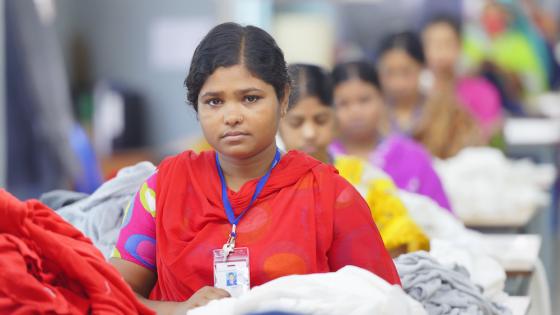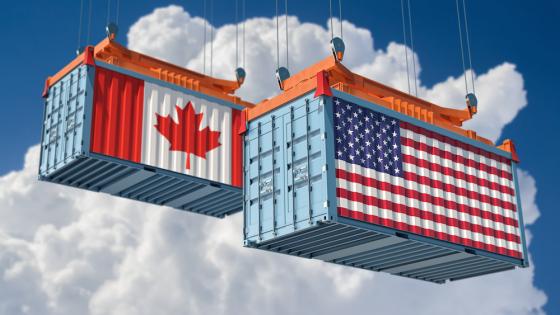As usual in times of economic peril, protectionism is back (Evenett 2012). Policymakers have long emphasised some of the negative side-effects of trade liberalisation and some academics have joined them. Rodrik (2011), for instance, argues that economic integration must not come at the cost of undermining countries' policy space to provide social insurance and steer industrial policy.
One negative side-effect of trade liberalisation that has often been underplayed is the fiscal aspect. Tariffs are taxes and some developing countries with poor information infrastructure rely heavily on them for revenue. As opening up to trade typically lowers these revenues, such nations face a challenge that is widely underappreciated in the developed world.
Figure 1 presents the evolution between 1975 and 2005 of total and trade tax revenues as a share of GDP separately for low-, middle- and high-income countries.
Figure 1. Evolution of tax revenues as a share of GDP, 1975-2005
Note: The data used is constructed by the authors from a variety of internal and official IMF and historical sources. All values are median values for the country group and time period considered. The sample includes in each time period 26 low income countries.
We see that at the start of the period tariff revenues were a major source of public resources in countries at lower levels of development. In low-income countries they represented a third of total tax revenue; in high-income countries, less than 2%. What’s more, revenues from trade taxes have been decreasing as a share of GDP in all country groups over the period with very different consequences on total tax revenue; in poorer countries they fell by two percentage points between 1975 and 2000.
There is a simultaneous fall in total tax revenues of the same magnitude. Not until the last period (2000-2005) do we see an increase in total tax revenues, which nevertheless remain lower than in 1975. Similarly middle-income countries also lost two percentage points in tax revenues over the period 1975-2000. The contrast with the experience in high-income countries is striking. Revenues from tariffs in rich countries are today a third of what they were in the 1970s but this has clearly been compensated by an increase in domestic taxes, with total taxes increasing from 30% to 36% of GDP.
A key result of the optimal-taxation literature is that taxes that affect production prices, such as tariffs, should never be used (Diamond and Mirrlees 1971). A persistent recommendation of the public finance literature to developing countries has therefore been to cut trade taxes and replace them with more efficient sales taxes (see for example Keen and Ligthart 2002).
This view has been influential. Cutting tariffs and liberalising trade were often advocated by international financial organisation. What these theories cannot explain and do not predict is the possibility that countries may not be able to recover the lost tariff revenues through the use of more efficient taxation on domestic income. This is however what the evolution of tax revenues in developing countries presented in Figure 1 suggests.
Evidence from 110 trade liberalisation episodes
In recent research (Cage and Gadenne 2012) we investigate this new hypothesis by identifying 110 'episodes', since 1945, during which revenues from taxes on trade fell substantially in developing countries and considering what happened to total tax revenues. We show that trade taxes as a share of GDP fell by four percentage points on average during those episodes. In more than half the countries we consider this fall in trade taxes was not compensated for by an increase in other taxes and thus lead to a fall in total tax revenues. Ten years later more than 40% of them still haven't recovered the lost tax revenues. Importantly, we also find that the picture is very similar if we consider the evolution of government expenditures. Nearly half of the countries which experienced a large fall in tariff revenues also experienced a simultaneous fall in their total revenues and expenditures which persisted for at least ten years.
To explain the data patterns, we extend the model of Besley and Persson (2009, 2010, 2011), according to which a pre-existing capacity to tax is needed to levy domestic taxes but not taxes on trade. The intuition is grounded in the historical experience of now-rich countries. In the first stages of industrialisation they relied heavily on tariffs to provide tax revenues. They gradually lowered them once they had developed a tax administration which made it possible to raise tax revenues through other means. Thus Great Britain financed its first large over-the-board decrease in tariffs in 1842 by the re-introduction of the income tax and the mobilisation of the modern tax bureaucracy built during the Napoleonic Wars. The extra tax revenue raised eventually allowed for further tariff reform and the famous repeal of the Corn Laws in 1846 (Bairoch 1989). We observe similar patterns in most OECD countries in the 19th and early 20th centuries.
We consider what happens if taxes on trade are decreased in this theoretical framework. We show that this will have a different impact on countries depending on the type of equilibrium they were initially in. Countries which were already investing in tax capacity will be pushed to invest more now that their future tax revenues have decreased. The decrease in taxes is costly for them in the short-run but welfare-increasing in the long-run as it hastens the shift towards a more efficient tax structure. On the other hand countries that are stuck in a 'low tax-capacity trap' suffer a permanent loss in tax revenues and welfare as a result of the decrease in trade taxes. Using our sample of trade liberalisation episodes we find evidence that better returns to tax investment increase the likelihood of revenue recovery.
Policy implications
Our argument is not that trade liberalisation is bad per se. In the long run a fall in tariffs will have a positive impact on welfare as it increases the efficiency of the tax system. However we point out that the net effect will always be negative for countries which are trapped in a low tax-capacity equilibrium, precisely those countries which were characterised by low revenue collection even before they decreased tariffs. We indeed observe that nearly a third of countries which experience a fall in trade tax revenues never recover the lost revenues through other means in our sample. Other countries will suffer from a short-run loss, but will be better off in the long-run.
Technical aid on public sector financial management has always been the poor parent of official development aid (OECD 2010). Both the evidence and the theoretical framework we develop point to the need to increase efforts to improve developing countries’ capacity to raise taxes. Our model suggests in particular that the gains from trade liberalisation can be obtained by investing in tax capacity. Building more efficient tax administrations in developing countries may lead them to open up to trade as they will no longer need to levy tariffs to raise revenue, though other protectionist motives for raising tariffs may be at play.
References
Bairoch, P. (1989): European Trade Policy, 1815-1914. Cambridge University Press.
Besley, T., and T. Persson (2009): “The Origins of State Capacity: Property Rights, Taxation, and Politics,” American Economic Review, 99(4), 1218–1244.
Besley, T., and T. Persson (2010): “State Capacity, Conflict, and Development,” Econometrica, 78(1), 1–34.
Besley, T., and T. Persson (2011): Pillars of Prosperity: The Political Economics of Development Clusters. Princeton University Press.
Cagé, J., and L. Gadenne (2012): “The Fiscal Cost of Trade Liberalization,” PSE Working Paper 2012-27.
Diamond, P., and J. A. Mirrlees (1971): “Optimal Taxation and Public Production I : Production Efficiency, ” American Economic Review, 61(1), 8-27.
Evenett, Simon (2012) "Débâcle: The 11th GTA report on protectionism", VoxEU.org, 14 June.
Keen, M., and J. E. Ligthart (2002): “Coordinating Tariff Reduction and Domestic Tax Reform”, Journal of International Economics, 56(2), 489–507.
OECD (2010) : “Public Resource Mobilization and Aid in Africa, ” in African Economic Outlook, African Development Bank and OECD.
Rodrik, D. (2011): The Globalization Paradox: Democracy and the Future of the World Economy. W. W. Norton.



